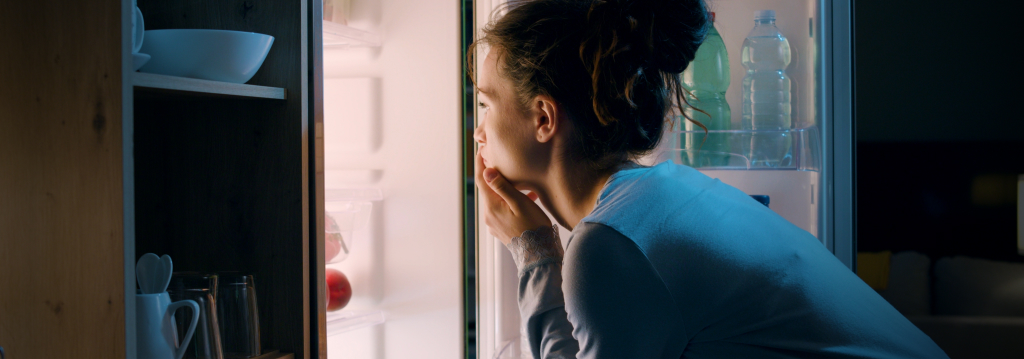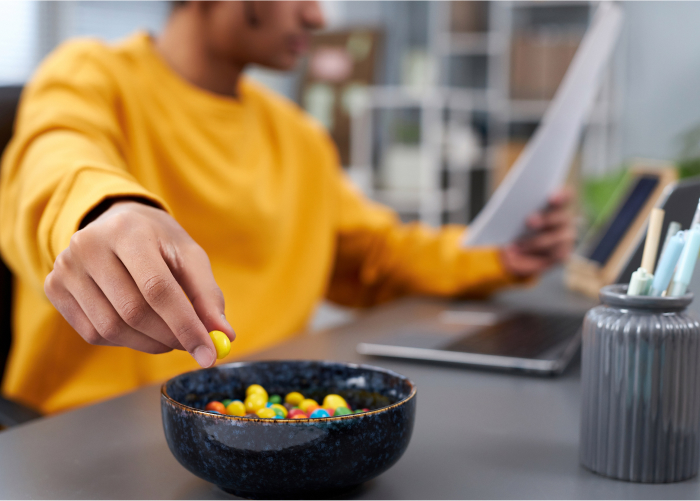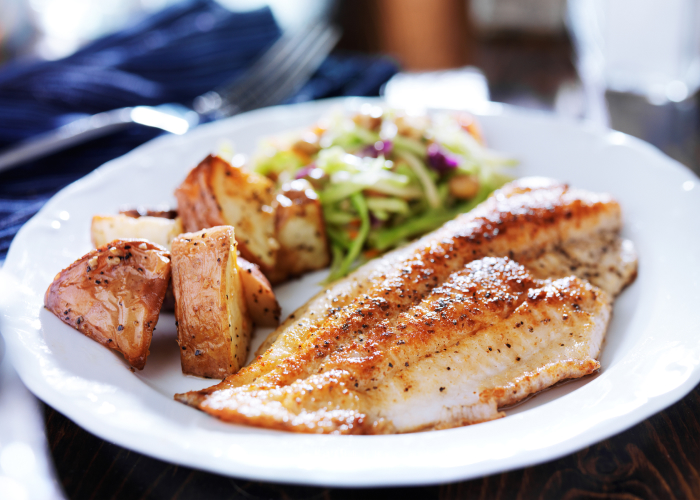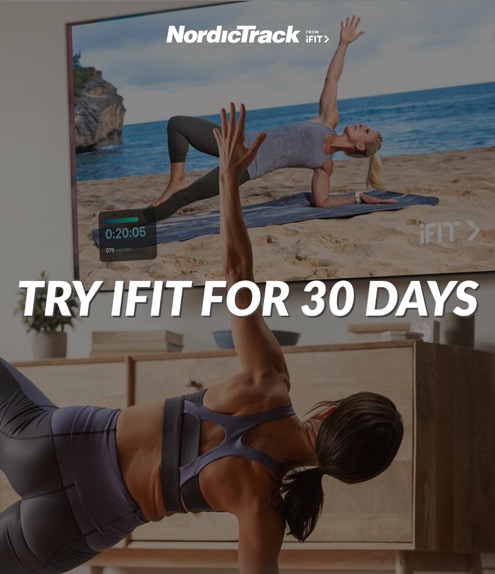
We’ve all been there — dinner is over, but your stomach (or is it your mind?) is calling you back to the kitchen. Well, you’re not alone. Many of us experience the temptation of after-dinner cravings, which can be frustrating and seemingly at odds with our health goals.
But why do they happen, even if you’ve eaten well all day?
Let’s unpack the science behind these urges and explore practical solutions to help you keep those nighttime nibbles at bay.
If you’re short on time, consider these key points on how to control after-dinner cravings:
- Identifying triggers: Pinpoint whether your cravings stem from emotional needs or not eating enough during the day.
- Boosting protein and veggies: They’re great allies to help you stay full for a longer period of time.
- Properly-portioned meals: Make sure to balance your portions so you don’t get hungry in the middle of the night.
- After-dinner activity: An evening stroll or a treadmill walk can help distract from cravings.
Understanding the Cause of After-Dinner Cravings

After-dinner cravings can have various triggers, from emotional and psychological needs to genuine hunger brought on by inadequate nutrient intake during the day. It’s essential to distinguish between the two to address them effectively. [1]
For example, stress or boredom can often masquerade as hunger, leading to unnecessary snacking. [2]
Conversely, if your meals throughout the day lack sufficient protein or overall calories, your body might be signaling a real need for additional nutrients. Consuming adequate protein at each meal can help regulate appetite hormones and reduce cravings later in the day. [3]
The Science of Satiety: Protein and Vegetables

Satiety, the feeling of fullness that lasts well after a meal, is crucial to preventing cravings. Protein, a macronutrient, boasts a high satiety index thanks to its ability to trigger the release of appetite-regulating hormones such as cholecystokinin (CCK) and glucagon-like peptide-1 (GLP-1). Including a protein source at each meal can help you feel fuller for longer and reduce the urge to snack later on. [4]
Vegetables, too, play an important role in promoting satiety. Their high fiber content slows down digestion, keeping you feeling satisfied for longer. [5]
Also, their high water content adds volume to meals without adding significant calories, increasing satiety. [6]
By incorporating vegetables into your meals, you provide your body with essential nutrients along with the fiber needed to keep cravings at bay.
Meal Sizing: Finding Your Balance
The size of your meals can significantly influence after-dinner cravings. Not getting enough calories throughout the day, particularly at dinner, can trigger hunger pangs overnight, as your body seeks to fuel itself. [7]
Meanwhile, overeating can lead to feelings of uncomfortable fullness and potentially disrupt your metabolism and sleep patterns. [8] Finding the right balance is a must.
Aim for moderate-sized meals that incorporate a balanced mix of macronutrients, including protein, fats, and complex carbohydrates. [9] This combination can help provide sustained energy release and promote satiety, reducing the likelihood of after-dinner cravings. [10]
After-Dinner Walk: A Two-Fold Approach to Curb Cravings

Taking a stroll after your evening meal isn’t just good for digestion; it’s also a powerful antidote to those stubborn after-dinner cravings. Engaging in light physical activity, like walking, offers a two-fold approach to managing cravings:
Physical benefits:
- Improves digestion: Walking stimulates the muscles in the digestive tract, aiding in the movement of food and promoting efficient digestion. [11]
- Regulates blood sugar: Light exercise after eating can help stabilize blood sugar levels, potentially reducing the dips and spikes that can trigger cravings. [12]
Psychological benefits:
- Shifts focus: The act of moving your body can be distracting, taking your mind off food and cravings. [13]
- Improves mood: Physical activity can elevate levels of endorphins, hormones known to promote feelings of well-being and potentially reduce cravings. [14]
If you want to include a nighttime walk to help curb your after-dinner cravings, no matter the time of year or the weather outside, a NordicTrack treadmill might be an ideal solution. Not sure which treadmill is right for you? Check out NordicTrack’s 2024 Treadmill Buying Guide for insights and recommendations on selecting the best treadmill for your home.
Seize the Night, Master Your Cravings
Conquering those after-dinner cravings is more than just a nightly challenge; it’s a journey toward understanding your body’s needs and reshaping your habits for the better.
It’s about tuning into the signals your body sends and responding with nourishment, not empty calories. When you prioritize protein and vegetables, find your mealtime sweet spot, and embrace the joy of movement, you’re not just dodging cravings – you’re building a foundation for healthy living.
Start tonight, and let the path to good health be one you walk with confidence!
References
- https://www.psychologytoday.com/us/blog/rhythms-recovery/202010/the-psychology-behind-cravings-and-how-deal-them
- https://health.clevelandclinic.org/emotional-eating
- https://www.healthline.com/nutrition/nutrient-deficiencies-cravings#TOC_TITLE_HDR_2
- https://www.hsph.harvard.edu/nutritionsource/cravings/
- https://www.mayoclinic.org/healthy-lifestyle/nutrition-and-healthy-eating/in-depth/fiber/art-20043983
- https://www.cdc.gov/nccdphp/dnpa/nutrition/pdf/rtp_practitioner_10_07.pdf
- https://www.medicalnewstoday.com/articles/321725
- https://my.clevelandclinic.org/health/diseases/24680-overeating
- https://healthy.kaiserpermanente.org/health-wellness/health-encyclopedia/he.carbohydrates-proteins-fats-and-blood-sugar.uq1238abc
- https://www.medicalnewstoday.com/articles/318441
- https://www.healthline.com/nutrition/walking-after-eating
- https://health.clevelandclinic.org/exercise-and-your-glucose-levels-does-timing-make-a-difference
- https://www.chartercare.org/services/weight-loss-surgery/blog/6-ways-to-avoid-food-cravings-from-interfering-with-your-weight-loss-goals/
- https://www.psychologytoday.com/us/blog/rhythms-recovery/202010/the-psychology-behind-cravings-and-how-deal-them
Disclaimer: The primary purpose of this blog post is to inform and entertain. Nothing on the post constitutes or is intended to be a substitute for professional medical advice, prevention, diagnosis, or treatment. Reliance on any information provided on the blog is solely at your own risk. Always seek the advice of your physician or other qualified health provider with any questions you may have regarding a medical condition, and please consult your doctor or other health care provider before making any changes to your diet, sleep methods, daily activity, or fitness routine. Do not disregard professional medical advice or delay seeking it because of information available on this blog. NordicTrack assumes no responsibility for any personal injury or damage sustained by any recommendations, opinions, or advice given in this article. Always follow the safety precautions included in the owner’s manual of your fitness equipment.


